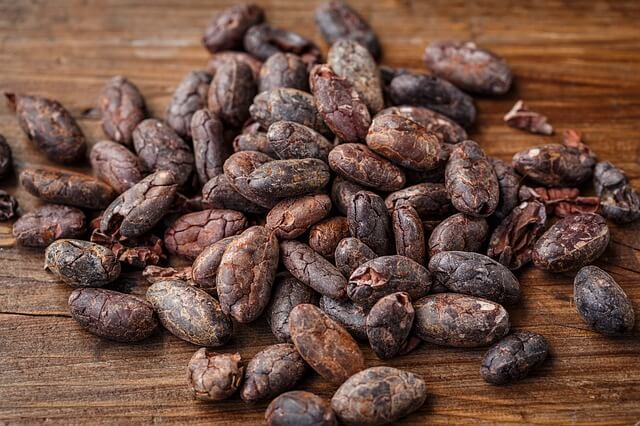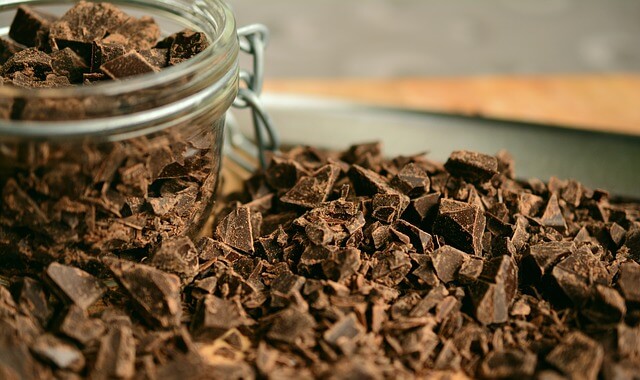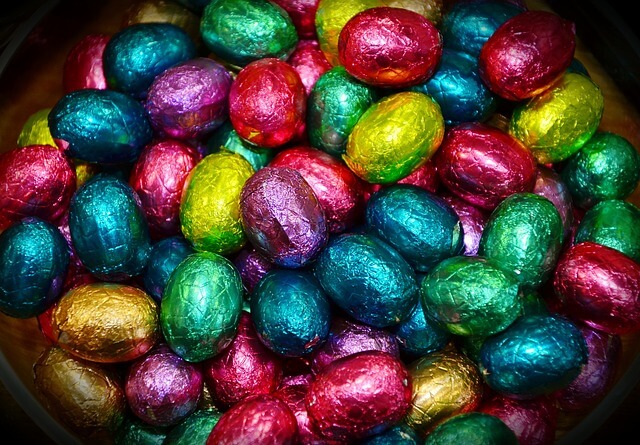The Health Benefits of Cacao, Cocoa and Chocolate
So, we all know that it’s the weekend where chocolate is in just about every house around the country. Let’s talk about chocolate. Sometimes as a Clinical Nutritionist I get asked about chocolate, like “What about dark chocolate? Isn’t it good for you?” Well, the answer (as you might have guessed) isn’t so straight forward. Continue reading to find out why.

There is a substantial amount of research on the health benefits of raw cacao, which is made from cold pressed, unroasted cacao beans, removing the higher fat content of the cacao butter. Raw cacao is rich in antioxidants that combat oxidative stress. Cacao contains an amino acid called PEA which is a precursor to serotonin, one of the body’s best-known happiness chemicals, a ‘feel good’ neurotransmitter. Cacao is one of the highest natural sources of calcium and magnesium in ratios that are just about perfect making them almost fully absorbable by the body. The magnesium content per 100g is approximately 272mg and accounts for a significant amount of the daily recommendation (the RDI of magnesium is 310-420mg per day depending on gender). Magnesium is necessary for many functions in the body such as energy (ATP) production, balancing calcium and aiding its absorption, blood pressure regulation, but is commonly known for its effect on muscle relaxation and nerve function. Cacao also contains iron and calcium, but the main active constituent, the polyphenol theobromine is possibly the main reason for the health benefits of cacao. Theobromine has shown in studies to cause anti-inflammatory effects, anti-tumour effects, antioxidant, cardioprotective effects, and the regulation of healthy gene expression and inducing the release of nitric oxide. Nitric oxide is known for its effects on lowering blood pressure, treating erectile dysfunction, boosting exercise performance and managing type 2 diabetes while improving insulin sensitivity.
It should be noted that theobromine is not safe for animal consumption as they metabolise this molecule more slowly than humans, which may lead to toxicity. Which is why you have heard, no doubt, that you should never give chocolate to pets.
Cacao ceremonies in ancient Mayan culture used this plant to give a higher perspective to life and to promote the use of creativity to respond to life’s challenges and obstacles. This ancient culture used the cacao plant for thousands of years in ceremony and ritual and saw this as a way to connect to the sacred spirit of the cacao plant.

The chocolate as we know it is made from cocoa, which is toasted cacao. This toasting process reduces the overall nutritional profile. Cacao itself contains very few calories/kilojoules, but chocolate, which is processed cacao with added sugar and saturated fats - is one of the most calorie/kilojoule-dense foods on the planet. However, cocoa (and chocolate) still contains theobromine. Dark chocolate contains higher amounts of the beneficial polyphenol content compared to milk chocolate. Some research has been done on the effect of eating dark chocolate (70% cacao) and this high polyphenol content. One study had participants consume 50g of dark chocolate a day and evaluated endothelial function. At 4 weeks results showed no significant changes in anthropometric measurements, body fat percentage, lipid profile, blood pressure and biomarkers of inflammation. The study, however, showed an increase in endothelial function (improved heart and blood vessel function), a reduction in blood pressure and improved circulation. Dark chocolate may also stimulate the release of endorphins, giving an ‘anti-depressant’ effect.
One study followed over 10,000 people for 6 years and found that the more chocolate people consumed, the more weight they gained on average [1]. This was a dose-response manner, meaning that the higher amounts of chocolate people consumed in the study equated to the higher amounts of weight gained. However, the people in the study who were overweight or obese typically ate less chocolate on average, compared to people of a healthy weight range. This is because the people in the study who were overweight or obese reported that they consciously limited their intake of discretionary foods like chocolate in an attempt to improve their weight.

Having said all this, my goal is not to make you feel bad or guilty about eating chocolate. Life should be enjoyed and if chocolate makes you feel happy then you should enjoy it from time to time. The secret is moderation, and Easter is only one weekend out of 52 in the year. So ‘let your hair down’ so to speak. One idea in the world of nutrition is that you should eat what is healthy and good for you 85-90% of the time, like getting adequate fruits, vegetables, water, and protein each day providing a diet rich in vitamins and minerals, and the remaining 10-15% you can enjoy life and eat or drink the things you enjoy or feel like eating, like chocolate. ‘Let your hair down’ so to speak. One idea in the world of nutrition is that you should eat what is healthy and good for you 85-90% of the time, like getting adequate fruits, vegetables, water, and protein each day providing a diet rich in vitamins and minerals, and the remaining 10-15% you can enjoy life and eat or drink the things you enjoy or feel like eating.
References












